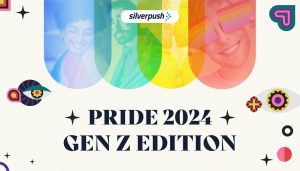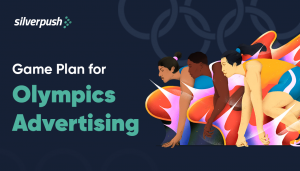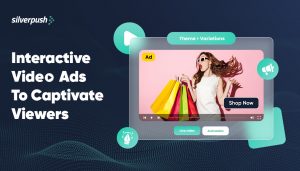Discover How to Capture Hearts With Pride Advertising
PUBLISH DATE: 15 May 2023
Pride month is in full swing, with the month of June on its way. The LGBTQ community globally accounts for 4.6 trillion US dollars. The community has been globally in the news, as many countries recognize them and are helping them live free lives.
Pride Month is celebrated in honor of individuals who were involved in the Stonewall Riots of 1969. With the glitter and rainbow flags, people join the festivities. whereas, by changing colors, sharing pride month trivia and social media post advertisers tap into every opportunity for pride month advertising.
How Brands Leveraged Pride Month Before?
Pride advertising is another example of moment advertising which brings huge reach for brands and a chance to make a long-lasting impression. Burger King and Honey Maid are the two brands that made the most out of the pride month advertising in 2014.
Proud Whopper
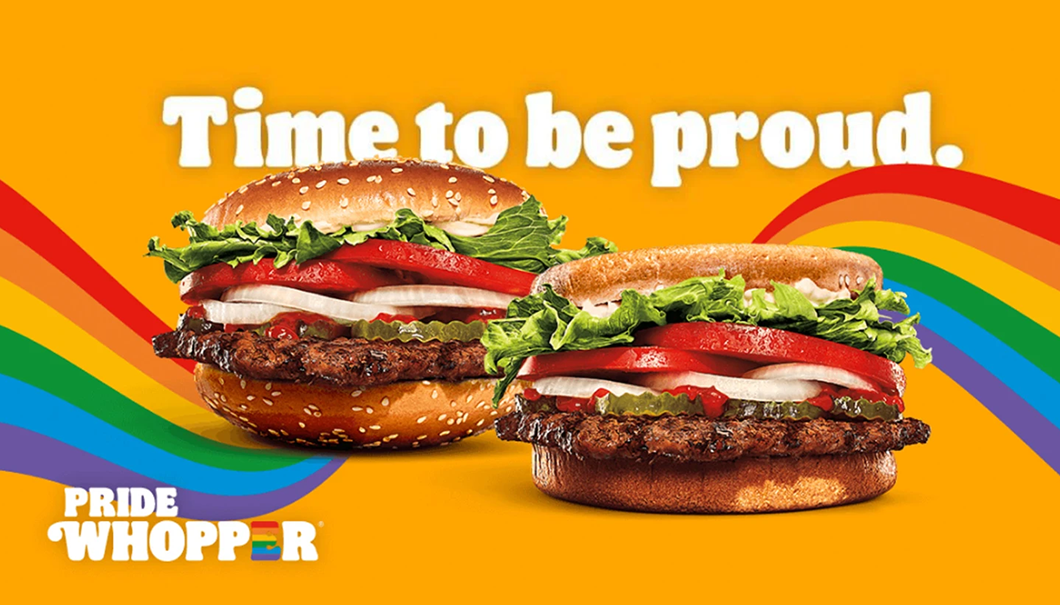
In 2014, Burger King ran the ” Be Your Own Way” campaign under which it launched “Proud Whopper”. It was a spin on its “Have It Your Way” brand positioning.
During the pride parade, it launched its Whooper burger that came in rainbow-colored wrappers. What intrigued the audience with this burger was the strong message which resonated with them. It said, “We are all the same inside”.
The campaign stood out as it received 7 million views across all social media channels. There were more than 5.3 million views on the YouTube video alone. 20% of Americans saw the Proud Whopper advertisement, and young millennials over-indexed by 4.8X.
This is Wholesome
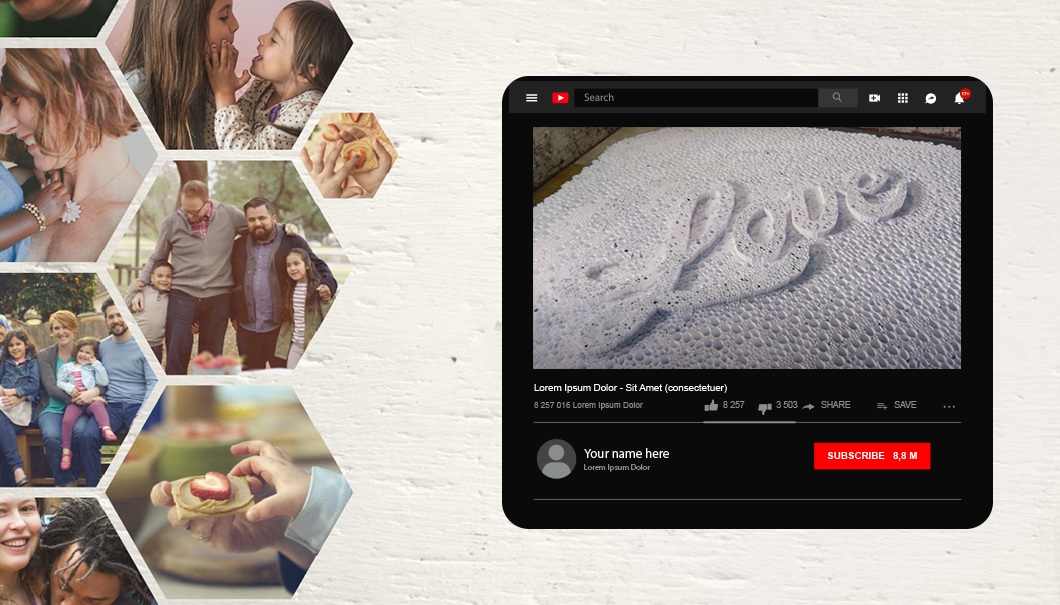
Honey Maid recognized a chance to engage with its consumers while highlighting its long history and commitment to inclusivity by honoring the variety of the contemporary family.
Over 8 million people had seen the 30-second ad on YouTube. According to YouTube statistics, Honey Maid was able to determine that 97% of the ad’s video views came from those aged 25 to 54 using age and gender targeting. Women help the majority in viewership as they accounted for 98%.
But there was an obstacle that arose during the campaign. The message of the campaign did not resonate with everyone which led to negative tweets and comments.
Honey Maid saw it as an opportunity to tap into the audience’s mind and capitalized on it. They created a clever response to the negativity. They made a video ad, where two artists utilized printouts of all the critical comments to form the word “LOVE”.
It was straightforward and effective, giving Honey Maid another opportunity to demonstrate its dedication to the causes of diversity and equality as well as its support for the LGBTQ community.
More than 4 million people viewed “Love.” According to YouTube data, the first 90 days of views were equally split between males and women, and over a quarter of viewers were millennials under the age of 24.
What are the Key Takeaways?
Both campaigns significantly benefited the brand by building strong brand awareness. But another key takeaway that advertisers had was the importance of a message to resonate with the audience. Engaging the audience emotionally is a simple yet strong way to make a place in people’s hearts.
How to Make the Most from Pride Advertising In 2023?
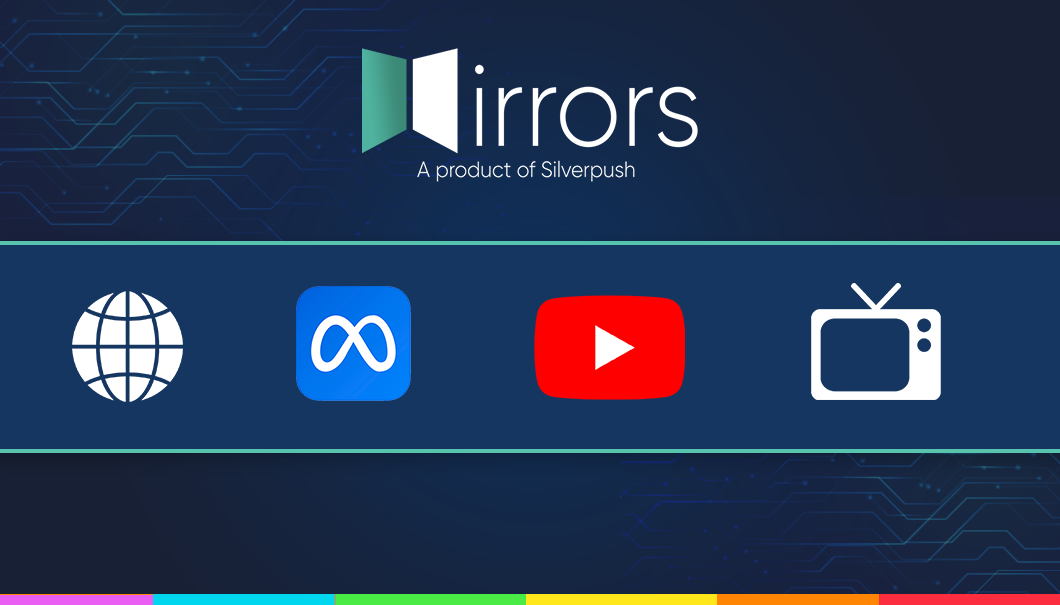
The advertising landscape has transformed a lot. Privacy-focused future have made Apple and Firefox take the revolutionary step by banning the use of third-party cookies whereas Google is planning a strategic phase-out while working on alternatives.
So, how can brands make the most during the pride month?
Contextual Advertising is one of the ways to capitalize on the opportunity. Mirrors is a revolutionary AI-powered technology offered by Silverpush that ensures advanced brand safety.
The high-powered AI technology ensures that the message reaches the right audience at the right time. Mirrors identifies key contexts of the blog by reading every word and interpreting it just like the human mind whereas for videos it watches key contexts.
To place the relevant ad, Mirrors works on six detectors, renowned celebrities, brands, locations, emotions, objects, and actions.
This year, advertisers can make the most through pride month by relying on omnichannel contextual advertising as Mirrors can function across multi-channels.
1. YouTube
Video ads are widely acceptable, and they accounted for 82% of global internet traffic in 2022. The in-video context detectors help Mirrors find the relevant ads. This increases the possibilities of users engaging with the brands as it is relevant to the user when they are highly intrigued.
2. Open Web
Based on the content of the webpage consumed by the target audience, AI-based technology can place relevant ads.
3. Meta
Mirrors carefully choose and analyze brand-safe Facebook pages to extract contextual signals that enable the distribution of real-time, in-the-moment advertising with remarkable performance. This is done with the help of Artificial Intelligence (AI), Machine Learning (ML), and Natural Language Processing (NLP) models.
4. CTV
Ads are displayed in appropriate surroundings using semantic analysis, content analysis, and customized ad segments to prevent inappropriate placement depending on user emotions and behavior. Facebook is the best place for people with varied interests.
Conclusion
Advertising for Pride is more than simply recognizing and appreciating the LGBTQ community. It is the opportunity for brands to communicate their truth and take a position. According to a study, 45% of consumers under 34 years old say they’re more likely to do repeat business with an LGBTQ-friendly company. It is time for brands to take this opportunity to attract their desired audience contextually.
Play Safely: Strategies for Brand Safety in In-Game Advertising
PUBLISH DATE: 30 April 2023
Video games have always engaged a large audience, especially GenZ, and millennials. This gives advertisers and brands an opportunity to innovatively establish a solid brand recall.
As gaming devices continue to gain popularity and offer more opportunities for brands to reach their audience, the global gaming market is predicted to grow at a CAGR of 9.9% from 229.39 billion in 2022 to 252.10 billion in 2023. Additionally, it’s projected to reach 401.32 billion by 2027 at a CAGR of 12.3%.
The gaming industry is in an evolving phase and advertisers must explore this in-video game advertising. The primary reasons are:
- The gaming industry has a huge audience base who play games on different devices. This means brands have more than one opportunity to reach their targeted audience.
- With a large audience reach, the gaming industry has a loyal fan base. According to a study, in-gaming advertisements had influenced 44% of gamers to engage with brands.
However, this pool of advertising opportunities will require brands to focus more on brand safety.
What are the Key Components of Brand Safety for In-Video Gaming Advertising?
Measures taken to protect the brand image are known as brand safety. This is done to protect brands from irreparable damage as we had a few examples in the past of how the brand’s reputation was damaged beyond repair due to ad placement next to inappropriate content.
Interactive Advertising Bureau (IAB) has shared an impactful framework for advertisers which can help them in ensuring brand safety.
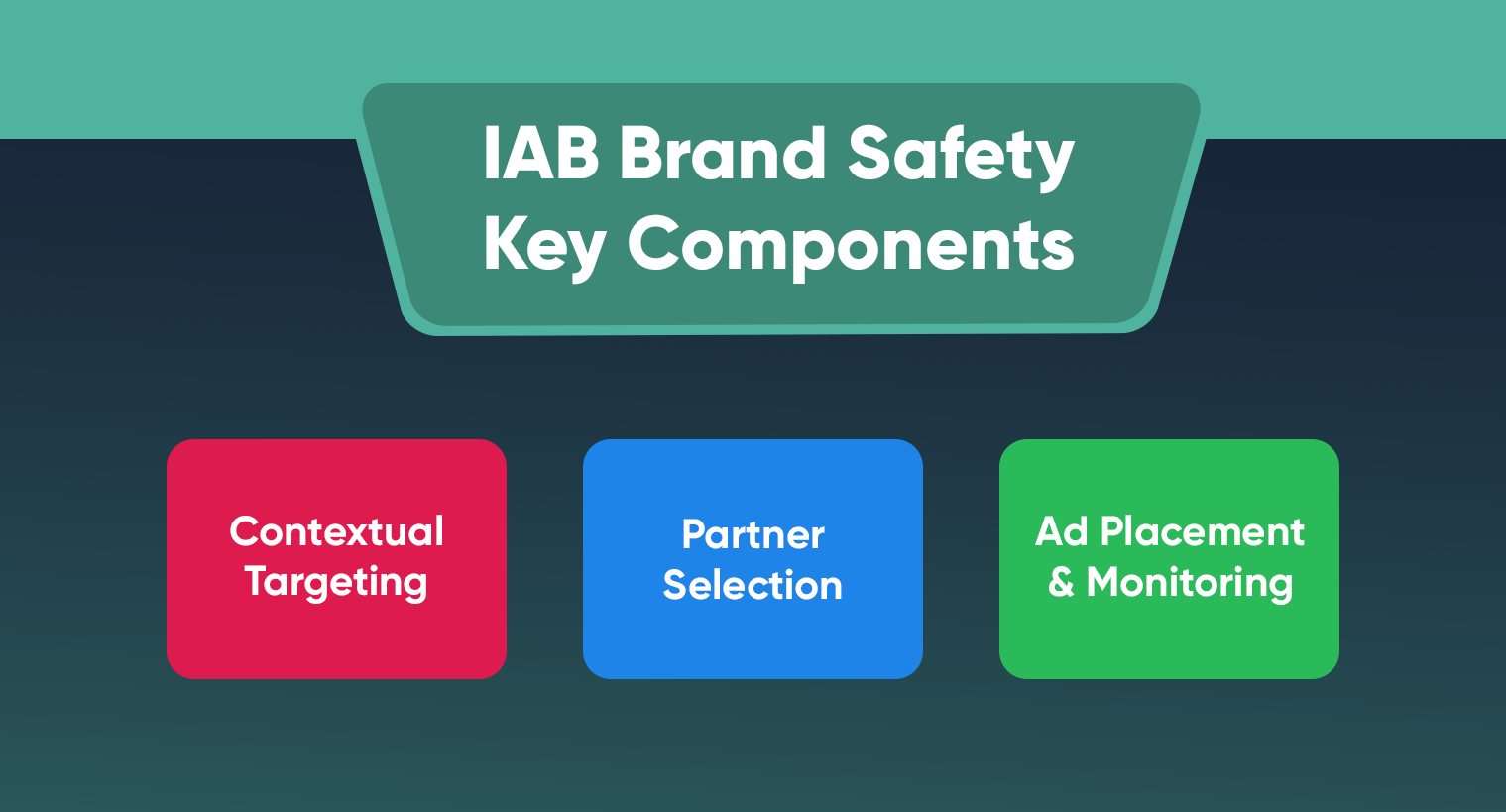
1. Contextual Targeting:
The process to phase out third-party cookies was started years ago. This was done to abide by the privacy of the user. Amidst the evolving landscape of advertising, advertisers began to rely on contextual targeting which resulted in higher brand engagement. In-video gaming advertising, advertisers must rely on contextual advertising to be profitable as the AI-powered technology ensures that the ads appear to the relevant content. A customized blocklist is prepared but unlike keyword-based targeting, the AI understands the context of the keywords used like a human mind. This increases the advertising opportunity, brand safety, and audience engagement with the brand.
2. Partner Selection:
Brands look for partners who would help them in setting up the ads in the video games. But before finalizing the partners, brands must evaluate them based on their game quality, advertising ecosystem, and compliance with General Data Protection Regulation(GDPR) and Children’s Online Privacy Protection Act (COPPA) regulations. It’s also essential to review the game’s content for any violent or inappropriate content that doesn’t align with the brand’s values. Advertisers should request a comprehensive explanation of the partner’s brand safety policies and a block list of prohibited advertisers or services.
To enhance your brand safety, you perform the following steps to ensure multi-level verification. Use a combination of the following verification tools:
- Viewability – This will help you get the percentage of ads seen by your audience. This tool ensures that your ad is seen by the target audience.
- Fraud detection-This tool will help you in identifying and preventing fraud. It will detect invalid traffic, bots, and any fraudulent activity which has the ability to impact your campaigns.
- Brand Safety Protection- This tool will add an additional layer of protection for contextual targeting. The tool will ensure that your ads aren’t displayed against inappropriate content.
- Audience Verification- This tool will give you insights into the audience who have seen your ad.
3. Ad Placement and Monitoring:
A key component of brand safety in video game advertising is ad placement. To prevent any unfavorable connotations with the brand, advertisers should make sure that their adverts are positioned in the proper areas inside the gaming environment.
For instance, advertisements for gambling or alcohol shouldn’t be included in kid-targeted games since they might expose kids to unsuitable content and harm the reputation of the company.
In a similar vein, advertisements for graphic or explicit content need to be kept out of games targeted only at adults. To make sure that their advertising is neither obtrusive nor disruptive, advertisers should also take the context of the gaming environment and the entire user experience into account.
Apart from the placement advertisers should keep a close eye on their campaigns to ensure they are not running in inappropriate places. Utilizing technology solutions and collaborating with partners to resolve any problems that may occur be part of this. For instance, advertisers may check ad placement and look for any possible brand safety issues using third-party technologies. They may also closely collaborate with their partners to resolve any problems and make any necessary modifications. In order to track success and pinpoint any areas for improvement, advertisers should also set up clear reporting tools. Advertisers that regularly report on their campaigns can better spot potential problems and take proactive steps to solve them before they become a problem.
Conclusion
The gaming industry is on the rise and in the coming years gamers will be a prominent and much larger community. Advertisers must explore this evolving landscape of advertising while they focus on brand safety.
Brand Safety: A Sure Shot Guide
PUBLISH DATE: 31 October 2022
Study: Brand safety impacts 75% of companies, yet only 26% take action. Are you the one taking action?
The goal while advertising is clear: The brand must be protected at all costs! But the question is, how?
The different targeting methods used by brands on various platforms (YouTube, Social & OpenWeb) revolve around either using their data or keeping brands completely in the dark about where their ads are getting placed. The reason for this? The growth of programmatic advertising and dependency on behavioral targeting.
This has left brands under threat. How to ensure ad messaging does not appear next to harmful content online? How to protect brands’ credibility and their customers?
Answering these major questions is this guide which delves deep into the topic of brand safety. Here, we will break down brand safety, and the different threats looming around it and lay down the protection measures to be followed for the success of brands in a fast-approaching cookie-less world.
What’s in the Guide?
1. Brand Safety Crisis- Where it All Began?
4. How is Brand Safety Different from Brand Suitability?
5. State of Brand Safety on Social Media Platforms
9. Why is Brand Safety Important?
Brand Safety Crisis – Where it All Began?
The first major brand safety disaster in the world of video advertising occurred in March 2017. The Guardian, a British daily newspaper, blacklisted YouTube after discovering its advertisements appearing alongside hate speech and extremist content.
As a result, major names like Toyota, Proctor & Gamble, AT&T, and Verizon withdrew millions of dollars in ad spending from YouTube.
For the first time, YouTube was dealing with both reputation and revenue damage. And it wouldn’t be the last time. Despite implementing remedial steps in 2017, 2018, and 2019, YouTube was still blamed for harmful brand exposure.
YouTube is not the only platform affected by the problem; marketers on Facebook and Twitter are also experiencing brand safety difficulties.

What is Brand Safety?
According to the Internet Advertising Bureau (IAB), “brand safety is keeping a brand’s reputation safe when they place their ads online“. In simple words, brand safety is just taking measures to ensure that ad messaging appears against content that is not harmful in any manner.
The result of this is reduced risk of ad misplacement and a brand’s reputation unharmed. Plus, the elimination of the funding of content and services that infringe copyright. But it’s a lot more complicated than it seems.
The IAB has put benchmarks in place to help marketers avoid unsafe content and execute brand safety measures. While the list is constantly expanding, harmful content is referred to by global digital advertising as the “Dirty Dozen” category that needs to be avoided.
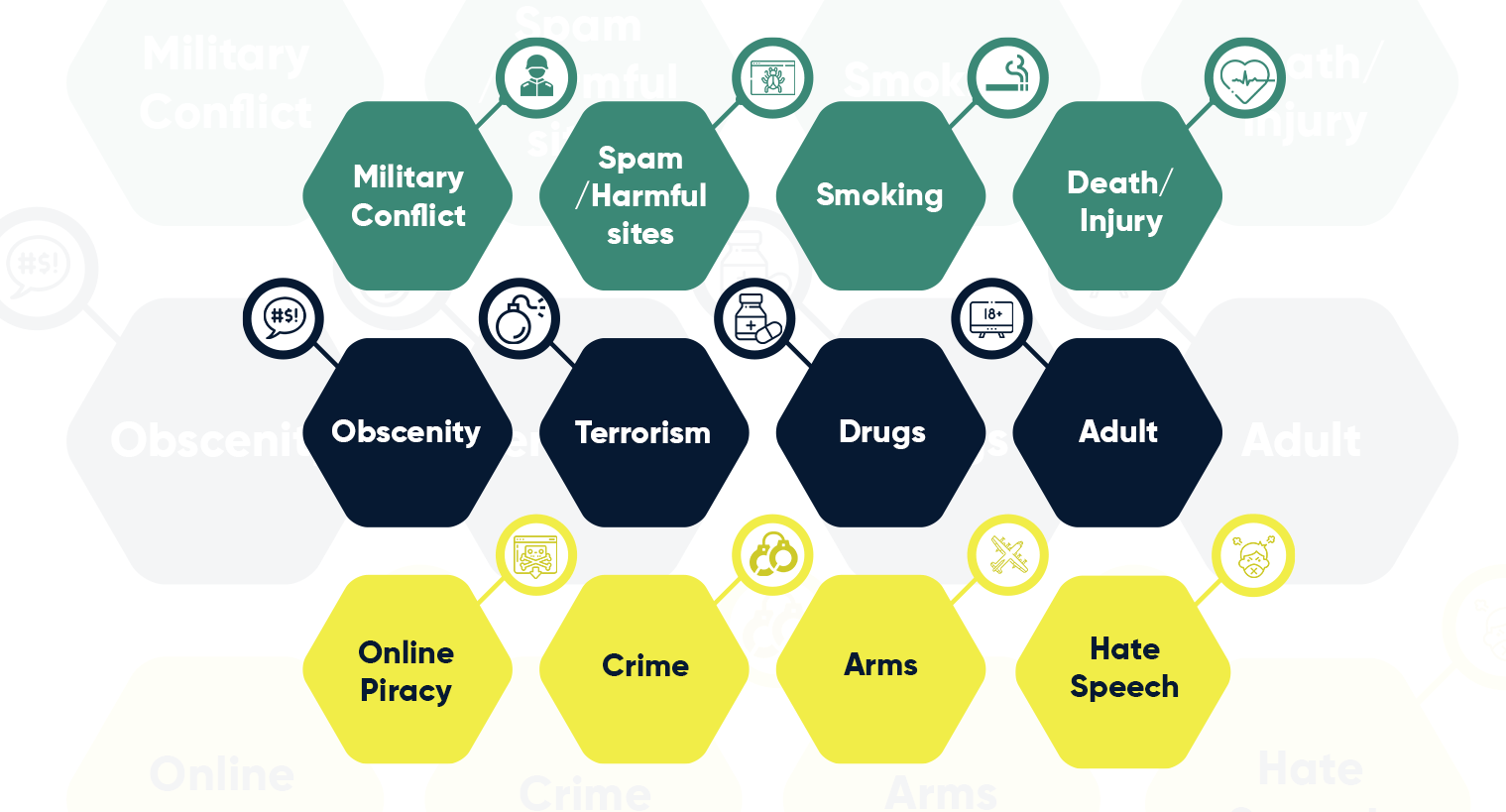
Example of Brand Safety
Depending on the image they’ve created, different brands have various rules regarding where they want to promote their product. An example of this is the renowned brand, Apple, which does not allow villainous characters on the screen using their devices. All this is done to protect their brand image.
Below is an example of a top Coke brand’s ad being displayed on violent content.

How is Brand Safety Different from Brand Suitability?
While brand safety categories enable businesses to avoid having their ads placed next to inappropriate content, these few industry rules might look excessively harsh at times. It is far more complicated than simply avoiding harmful words or creating keyword block lists. This is when brand appropriateness comes into play.
Brand suitability takes brand safety to the next level. It is more than just ensuring that the brand’s reputation is not affected as a result of the facts around it. More importantly, brand compatibility is based on understanding the complete context of a page to ensure that it is suitable and matches the message of a brand.
Brand Suitability Examples
- What is appropriate for a healthcare brand will almost certainly differ significantly from what is proper for an alcohol brand.
- Marketers dealing with luxury watch businesses should avoid material geared at children and instead look for content aimed at working professionals.

Brand Safety on Social Media Platforms
The popularity of social media has increased significantly in recent years. A recent survey found that one in every four customers spends more than five hours each day on social media.
Facebook is the most popular, with 83% of respondents stating they had an account, followed by YouTube.
In the midst of fake news and possibly unpleasant information, marketers are becoming increasingly worried about their brand safety on such platforms.
Other social media platforms like TikTok have surpassed one billion users worldwide, and have emerged stronger from the epidemic. These platforms have faced several brand safety crises in the past year, discussing some of them below:
State of Brand Safety on Different Social Media Platforms
1. YouTube
Timeline of YT’s brand safety crisis:

2. Facebook & Twitter
Facebook and Twitter made a greater play for video advertising from 2017 to 2019. Both platforms leveraged YouTube’s fails, by making brand safety a central theme to promote their video ads business. Despite this, both platforms experienced massive issues ranging from unsafe brand exposure to data privacy violations.

Challenges of Brand Safety
Millions of dollars worth of video ads are spent primarily to find a home on social video platforms like YouTube, Facebook, Twitter, Snapchat, and more. Ads are placed against user-generated content, where the objective is to leverage fast-churning content that users relate with. However, with 500 hours of videos uploaded to YouTube alone each minute, it is a challenge to limit ad placement only to content that seems suitable.
Brand safety is concerned with preventing the loss of trust between a brand and a customer. This is due to the fact that without trust, revenue, brand equity, and customers’ interests are either reduced or eliminated.
A transparent digital advertising brand safety vendor partnership is the solution to this problem.
Advertisers must understand that the brand safety approach used for their digital advertising initiatives works at the speed of culture. This can help in absorbing new issues as they arise and does not over-block information or allow unsafe/inappropriate content to pass through.
This happens mostly during keyword blocking and domain-level allow and blocklisting. Because of over-blocking, many keywords that have different meanings, and URL domains that house information on a broad variety of topics get sidelined.
When it comes to brand suitability, many businesses fail to execute it successfully due to the inability to find a comprehensive solution.
According to a recent survey, 49 percent of marketers have encountered brand suitability failure, 54 percent have faced consumer hostility, and 44 percent have lost revenue because of it.
Threats to Brand Safety
1. “Malgorithms” – when pages and ads misalign
Malgorithms are examples of advertisements in which the contextual meaning of a page and a display ad is mismatched.
2. Ads on Fake News
If you don’t pay attention to where your ad appears, your brand may be associated with fake publications and harmful charges. The Pizza Gate narrative, which became viral in 2016, is an example of this. It’s a problem that has prompted Reddit to remove programmatic advertising from conspiracy theory posts. While Google’s AdSense policy has been modified. All of these changes are the result of businesses refusing to identify with harmful “false” material. AdSense will no longer display advertisements on websites that “misrepresent, misstate, or hide facts.”
3. Extremist Sites
Moving on from the issue of false news, there is the possibility of adverts on a website that promotes extreme ideas. A marketer’s worst nightmare is having their brand connected with a divisive position. Let alone knowing that their point of view was supported by an advertisement! Again, whether far left, far right, racist, sexist, or fundamentalist, a brand does not want to be associated with harmful material. Google, in particular, has been under intense criticism. In fact, it was shown that brands in the United Kingdom had unintentionally given over £250,000 to extremist websites in the previous year.
Importance of Brand Safety
It takes years and significant resources for a brand to build a reputation in the minds of consumers. Not just the product or service, the consumers also connect with the brands’ values and principles. Even a single, less-than-desired association, can tarnish a brand’s reputation and consumers’ trust.
According to data, 1 in 10 ads is placed against harmful content.

Protecting your brand’s reputation and image within the industry is integral to garnering long-term success. Here’s why is brand safety important:
1. It Safeguards Your Reputation
It’s important to ensure that your brand is in good standing among the clients and the industry at large. 80% of consumers will stop or reduce buying products advertised across extreme or violent content. The type of content within which your brand is displayed will directly relate to how your brand is perceived. For example, if your ad messaging is placed within range describing natural disasters, that may paint your brand in a negative light. Therefore, putting brand safety measures in place will help to safeguard your reputation and build trust with your consumers.
2. It Helps You Stay Competitive
Gone are the days when brands stayed silent on important issues! By aligning yourself with the social causes you believe in, you will not only promote your brand identity but also stay competitive in a world where consumers want brands they are supporting to have a voice.
3. It can Optimize Your Ad Spend
In order to promote brand safety, your ads will most likely appear within premium content where your ad spend is optimized and going toward valuable impressions and engagement. Plus, any threats to your brand’s safety can cause consumers to lose trust and decrease your revenue.
Who Decides “What’s Safe & Unsafe”?
Many organizations are working to develop brand safety policies. The most well-known organizations are the Interactive Advertising Bureau (IAB) and the Media Rating Council (MRC).
These trade organizations, in partnership with brand safety vendors, establish rules and best practices for publishers, advertisers, and agencies to follow in order to maintain a healthy supply chain and thereby avoid placing their advertising on unsafe material.
They lay the groundwork for ensuring that the publisher’s inventory is accessible, meets privacy rules, and adheres to best practices for placement. Similarly, advertisers must adhere to brand authenticity and material restrictions for ad standards.
Ensuring Brand Safety with Mirrors
One of the key challenges with traditional brand safety tools is the inability to identify the right context, be it keyword targeting, blacklists, or dealing with unsafe programmatic video ad placements.
Mirrors, by Silverpush, is an AI-powered contextual targeting solution focusing on serving personalized ads to the audience in a complete brand-safe environment. It enables the processing of large volumes of data at speed, with better context, at a larger scale, and improved targeting efficiency.

It focuses not only on brand safety but also on context-relevant brand suitability. Its AI-powered in-video context detection delivers brand safety controls without killing your reach and tackles the problems of over-blocking.
Mirrors’ computer vision technology has increasingly made it possible to detect in-video contexts with great accuracy. It offers unparalleled insight for advertisers to place context-relevant video ads in a highly structured manner, and at the scale, programmatic has traditionally offered.
It can block ad placements against unwanted, unsuitable, irrelevant, and harmful content. These solutions can provide the highest accuracy to not let a single damaging ad placement pass through, by using frame-by-frame parsing of video content.
100% Brand Safety with Mirrors
Mirrors’ deeply trained proprietary AI models identify custom-defined unsafe contexts like celebrities, actions, objects, and scenarios in a streaming video to contextually filter video content.
 These videos are classified into many levels of video content, including smoking, adult, violence, wrecks, arms, terrorism, and others.
These videos are classified into many levels of video content, including smoking, adult, violence, wrecks, arms, terrorism, and others.

Along with this, it also focuses on brand suitability through text & sentiment analysis, engagement metrics, and organic influence at the video level.
At Silverpush, we work with clients to create contextual advertising solutions that ensure brand safety and maximum ROI. Contact us today to learn more about how Silverpush can help boost your ad revenue and grow your business!

To learn about Silverpush and its offerings, contact us.
Apple’s New Ad Placements Immediately Caused Brand Safety Crisis
PUBLISH DATE: 02 November 2022
Apple recently unveiled new ad placements in the App Store as a part of its goal to expand revenues. However, the new ad space created controversy immediately after it came into effect. Gambling ads rapidly took over slots, in some cases appearing under apps designed to help overcome gambling addiction. The influx of gambling ads led to an outcry from developers, who didn’t want to be associated with such services and asked Apple to indefinitely pause ads in the gambling category.
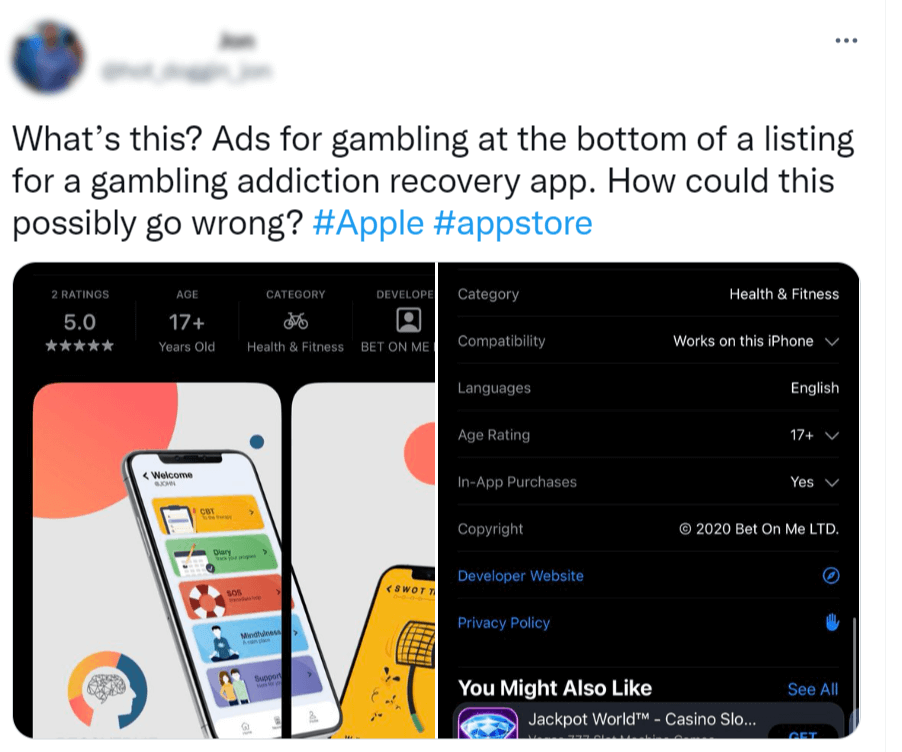
How did this happen? Since the implementation of AppTrackingTransparency, Apple has been keen to expand its ad revenues. So far, these efforts have been much more focused on the App Store.
- Apple is expected to gain around $4 billion in ad revenues in 2022, but as per reports by Bloomberg, it’s looking to expand those revenues into “the double digits”. In order to do that, it launched a bevy of new ad placements.
- One of the primary target is the App Store, as its search ads are a major driver of revenue. Apple has been spending the year opening more ad slots on the store’s home page, search tab, and even at the bottom of an app’s download page under a ‘You may also like’ category. This means that you might see an ad for Facebook on the Twitter’s page.
- Apple is also going to bring ads to Apple Maps, Books, and Podcasts, and exploring launching ads on Apple TV+.
So, where did it go wrong? Beginning from its tech products to its interfaces, Apple has a history to taking pride on user experience above all its new inventions. But if it wants a slice of the ad pie, it’s going to come at a price of its brand reputation.
- Consumers don’t like ads – period. Which is why there’s concern about Netflix launching ads, about Google serving pages full of promoted results, and about ads coming to free-to-play video games.
- There are not only consumers, Apple also has developers and brands to contend with. For one of Apple’s first ad ventures to immediately end up this way doesn’t speak highly of brand safety on its platform.
- It will be really hard for Developers who are already angry about shovelling over an aggressive 30% of in-app purchase to Apple. This makes them even more resentful as they can’t control what’s promoted on their download pages.
- Clearly, there is no excuse for this. Even if wasn’t Apple’s first foray into ads, it should have been ready for such a situation. Plenty of platforms already have come across such an issue where there ads are running where they don’t belong, and increasing ad load always boosts the risk of such incidents.
Conclusion
The gambling example speaks to Apple’s lac of experience in not only managing ad but in also providing a brand safe environment. As Apple tries to claim more ad revenues, both the user and advertiser experiences will decline – the same which can be said for any platform that is trying to dramatically increase its ad load.
How Does Silverpush Ensure Brand Safety and Suitability on YouTube?
PUBLISH DATE: 17 October 2022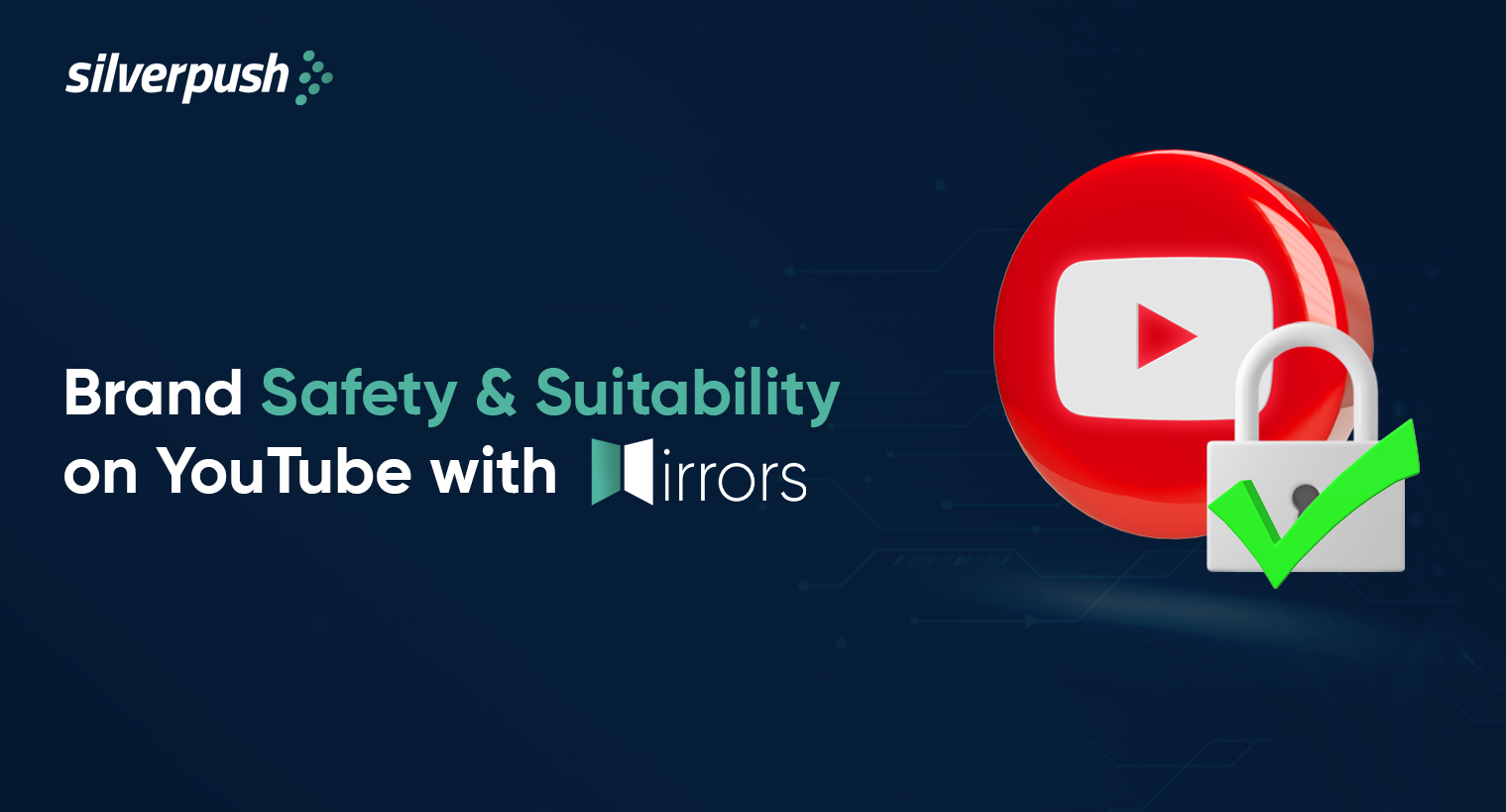
Silverpush ensures that brand advertisements are displayed on brand-safe content without over blocking their reach.
In an age where consumers increasingly choose to watch videos on demand, YouTube has become the most popular video platform worldwide.
According to a survey done on YouTube, there are 2.1 billion YouTube users worldwide and around 500M hours of video content is uploaded to the video platform every minute.
The video giant has become the leading online destination for millions of users from around the world. YouTube has 81% reach in the United States, and its mobile versions are doing equally well abroad.
As we can witness an increasing number of consumers shifting to the digital sphere, the necessity to maintain brand safety and suitability on YouTube has also risen.
YouTube advertisers demand campaigns that are not only safe and suitable but those that perform well.
Unfortunately, often it happens that the measures they’re taking for safety and suitability are so restrictive that the good content along with the bad gets blocked from the ads getting displayed on it. This affects both scale and ad performance negatively.
This blog is for every agency, advertiser, or publisher who is on the lookout for best practices to ensure brand suitability on YouTube at every stage of their ad campaign.
Demand for Brand Safety and Suitability Worldwide
37% of media agencies believe that without brand suitability measures, ads may serve in unsafe contexts.
Brand safety and company suitability are always changing and play an important part in sustaining a brand’s reputation in the digital advertising sphere.
Brand safety policies have been highlighted by digital marketers, agencies, and media alike. This is critical if you do not want to lose clients as a result of poor brand alignment.
Even after spending millions of dollars on advertising, any company would not want to mix fake news with genuine digital advertising.
During the COVID-19 times, the industry has seen an inclination toward brand suitability. Customers demand more from brands and want more control and confidence in the solutions they use.
Brand suitability bridges the risk-opportunity gap by enabling digital marketers to target safe, acceptable, and brand-building material using context-based restrictions.
Challenges Faced with Brand Safety and Suitability on YouTube
Brand safety is concerned with preventing the loss of trust between a brand and a customer. This is because, without trust, income, brand equity, and consumer interests are lowered or eliminated.
The solution to this challenge is a transparent digital advertising brand safety vendor relationship.
Advertisers must understand that the brand safety approach used for their digital advertising initiatives works at the speed of culture.
This can help in absorbing new issues as they arise, and does not over-block information or allow unsafe/unsuitable content to pass through.
This happens mostly during keyword blocking and domain-level allow and blocklisting. Many keywords with varied meanings and URL domains that store information on a wide range of topics are shelved as a result of over-blocking.
Many businesses fail to implement brand suitability successfully owing to an inability to identify a holistic solution.
According to a recent survey, 49% of marketers have experienced brand suitability failure, 54% have faced customer antagonism, and 44% have lost money as a result.
How Silverpush Ensures Brand Safety and Suitability on YouTube?
Mirrors by Silverpush is the world’s first AI-Powered in-video context identification technology that is redefining the limits of contextual brand suitability for YouTube advertising.
The technology drives greater campaign transparency and unlocks potential performance for advertisers wishing to avoid unsuitable content or categories of lesser relevance to the brand.
It focuses not only on brand safety but also on context-relevant brand suitability. Brand safety controls are delivered without killing your reach and tackle the problems of over-blocking.
Deeply trained proprietary AI models recognize custom-defined dangerous circumstances in streaming video, such as faces, actions, objects, and sceneries. These films are divided into several categories, including smoking, adult, violence, crashes, guns, terrorism, and others.
Along with this, it also focuses on brand suitability through text & sentiment analysis, engagement metrics, and organic influence at the video level.
Brand suitability is no longer only about safeguarding your brand; it is also about how marketers may choose which types of content providers to support with ad dollars.
FIFA World Cup Qatar 2022: Prepare for the Most Digital World Cup
PUBLISH DATE: 19 August 2022
The 22nd Edition FIFA World Cup 2022 is about to begin soon. The World cup stimulates a frenzy of marketing activities – both official and unofficial. It is about to kick off before the Black Friday, and with the final seven days before Christmas, making the market more challenging but unique for the advertisers, and marketers.
Qatar World Cup Audience Projected at 5 Billion this year. According to the official broadcast coverage of 2018 World Cup, a combined 3.572 billion viewers – more than half of the global population aged four and over – tuned in to world football’s ultimate competition. One of the biggest sporting event in terms of viewers is a unique and great opportunity for advertisers to connect with the audience and make an impact.
The key to connect with the audience during game time is to understand how they engage with the content, who they listen to. Here we have highlighted best practices for you to meet your goals.
This World Cup Win Hearts and Mind of the Consumers
Research from Trends shows that brands need to show diversity, promote gender equality, take a stand on social issues, show sustainability in their ads if they are to win hearts and mind of their target audience. The research also found that leveraging high-attention premium publishers during the tournament will be a key highlight for advertisers, as fans go check the scores online (71 percent), while some read online articles about the matches (51 percent).
This will be a huge opportunity for the brand as billions of people intent to follow the game. It is always a massive draw for the brands as the consumers are sticked to their screens in the hope that football will, once again, or this time will come home.
Some Interesting statistics to see:
- 65 percent of football fans believe that sponsors/ partners of the World Cup to have a business model that supports sustainability.
- 75 percent of UK consumers intent to watch football at home which means for FMCG brands that these consumers will buy alcohol (65 per cent), and snacks (65 per cent) to see them through the game.
- Qatar 2022 will be the first World Cup which will take place in an Arab nation.
- In the year 2018, the sporting event added an estimated $2.4 billion to the global advertising market
- Around two thirds of the World Cup’s market value comes from Europe.
A Tip for Marketers: Go Beyond Core Football Fans
There is no denying that the appeal of World Cup goes well beyond hard core football fans. Considering this, advertisers are advised to develop creative that speaks to a broader audience to stand out from the wild competition.
Take a Bet on ‘Crunch Time’
More and more viewers are consuming football content on Youtube. Football related searches on Youtube increased to 80% since Euro 2020. More searches means more viewing. And after years of not being able to watch sports in-person, there is definitely an adrenalin rush among people to go back to stadium to watch the match live.
The online offering of 2018 FIFA World Cup surpassed its offline one. The event welcomed three million in-person attendees, however, it also saw three billion Google searches, and five billion views on Youtube for World Cup related content.
- Connective with the audience after a match is over can be a bit difficult. For Search campaigns, Mirrors 360 by Silverpush deploy your ads where your fans are searching. Football fans are looking for match highlights, goal scores, and more content online after the match is over.
- Using the AI technology, high performing, and emerging queries on top of your exact/ phrase keywords are identified, allowing your ad to appear on searched which are closely related to the meaning of your keyword.
- In addition to this, the deep learning technology also identify the headline and description combinations to ensure that your brand delivers the right ad to the right person.
Kick a Goal Across Different Screens
The modern football fan is like any other shopper, who is happy to jump from one device to another to find information and until they meet their needs. However, younger demographics are a little difficult to crack. Getting their sporting fix online, there is no surprise that ad campaigns combining TV and YouTube can help the advertisers to achieve some mind blowing results.
In comparison to TV alone, a mix of 9:1 of TV and YouTube can yield an additional 33% of reach. Isn’t that a great number to see for your ad campaign?
Connected TV (CTV) has already started to change the game of digital advertising. Giving brands additional time to interact with their consumers, CTV advertising could be a game changer for many – especially during the peak shopping season. Reports have suggested that 60% year over year growth of people watching football content on the platform via their TVs. Clearly indicating that TV screen is the fastest growing screen for YouTube watchtime.
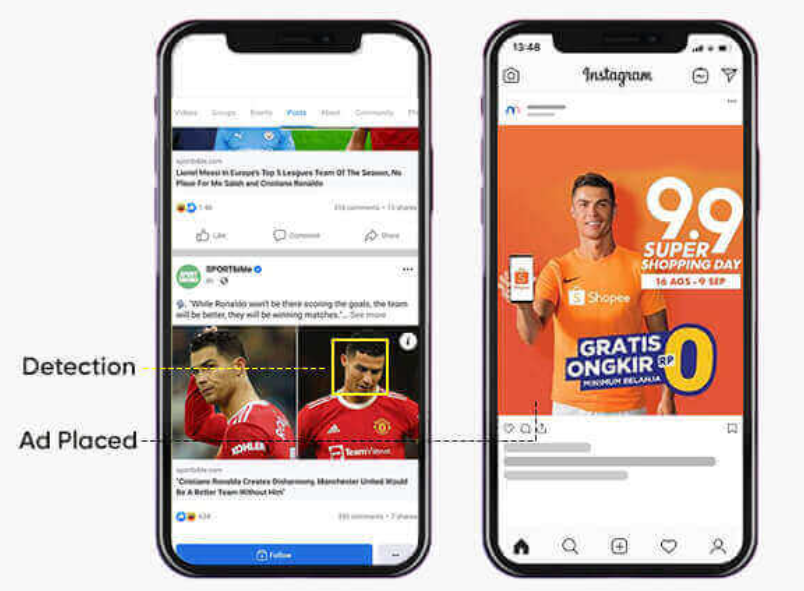
Interact with Excited Football Fans During Game Time
Silverpush offers three advanced AI solutions which solves the major challenges of the brand –
- Reaching the audience at key moments without hampering their entertainment
- Deployed ads which are relevant to the target audience, thus keeping the engagement with the brand intact.
Eager to know the name of these solution products? Let’s take a look at these products and monetize on the excitement of FIFA fans.
Parallels Sports Sync
Silverpush’s sports sync helps brands maximize their brand exposure by triggering digital ads based on real-time sporting events. Advertisers can now automatically deliver cross-channel ads coordinated with trigger game moments like halftime; team moments such as scoring a goal, timeout or penalty; player moments such as celebrating a goal, winning a trophy in FIFA World Cup.
For the brands, the fact that they have the ability to sync digital message with real-time game moments offers relevancy for the product. It provides connected context to search, social, and display experiences, a game-changer for driving excellent results. And Parallels Sports Sync by Silverpush is at the forefront of these market trends.
Parallels Sports Sync truly guarantees to seize the moment and help the brands to deliver right ad to the right audience on the right device at the right moment.
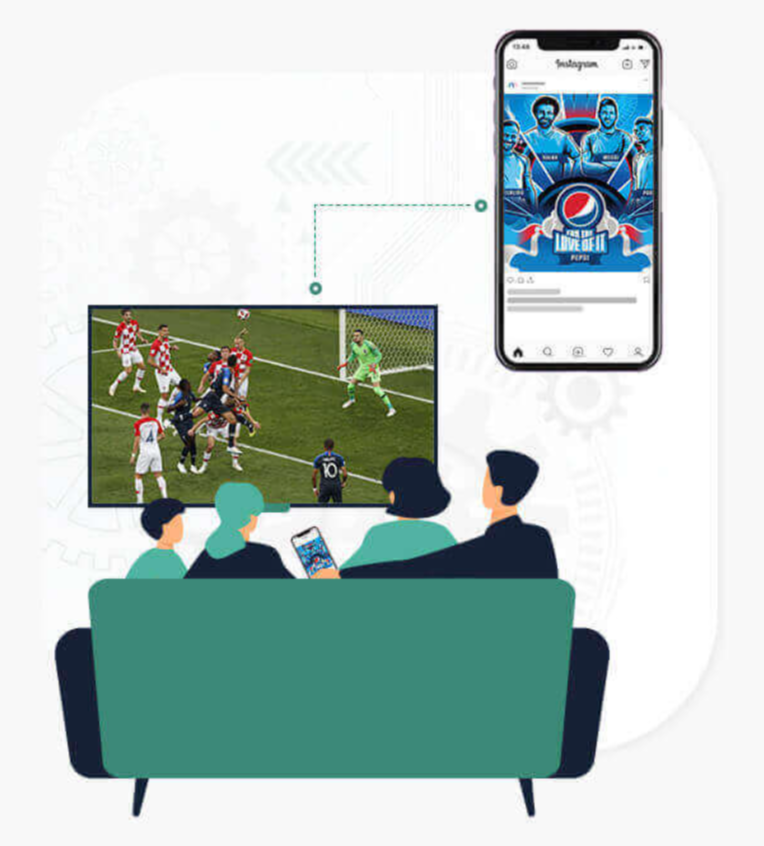
Mirrors
Mirrors by Silverpush is world’s first in-video context technology. The artificial intelligence (AI)-powered technology delivers more relevant in-video ads by identifying key contexts like celebrities, brands, objects, emotions, and everything related to football. It places your ad when consumers are most likely to engage without annoying the game enthusiasts. Mirrors has a huge amount of data already pre-processed and curated by the AI/ML models. Also, it has years of data for YouTube to boost the ad performance of brands.
This AI technology is available on the following platforms –
- Youtube
- Social Media
- Open Web
So, now the question is what does this means to you? Honestly, a whole package, let us try to list them all.
- Precise content curation
- Granular audience targeting
- Higher engagment
- Enhanced user experience
- Positive brand recall
- Data privacy compliance
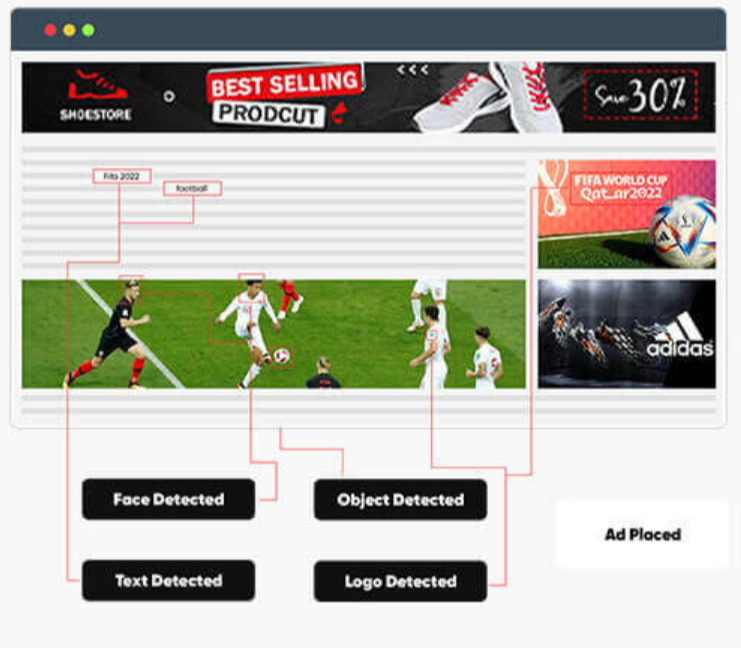
End Note
Silverpush has a goal to put you where your audience is without hampering your brand reputation or invading user’s privacy. Remember, it’s not everyday that half of the world is watching your ad. Contact us and let us help you hit the back of the net with our World Cup advertising deep machine learning solutions.
What does Brand Safety Mean in 2022?
PUBLISH DATE: 08 August 2022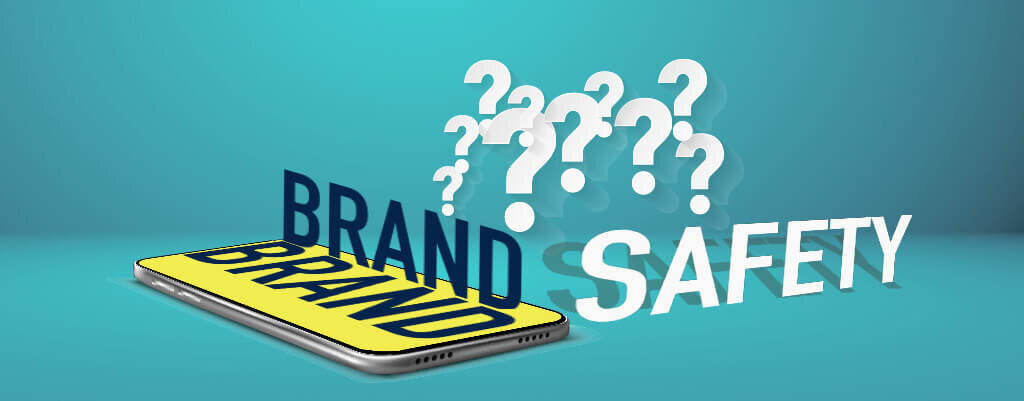
These days, brand safety is at the forefront of many advertisers. Once, the concept of brand safety was simple as it was the considered brands to display their ads during the correct TV show. The switch to online and saturation of content has made it harder for brands to control when and where their messages are placed.
The term ‘brand safety’ is often associated with placing ads under the right content. But for many, it also means finding ways to avoid ad fraud. Advertising fraud wastes ad dollars and supports bad publishers, in return benefiting the industry and consumers to mitigate fraud.
With pandemic and other world conflicts, it has become even harder as there has been a spike in screen time for the people to check the websites or social media for obtaining information. Internet, one of the greatest inventions has proven to be the budding ground for fake news and conspiracies, leading to increase in harmful content appearing on Youtube. The largest video platform has already deleted millions of irrelevant and potentially dangerous content or videos related to pandemic, violence, but that has not stopped brands from pulling ads on such videos. [You may also like: Seven Practices to Ensure Brand Safety on Different Channels]
There are much more expectations from the brands and they are now not in a position to stay in sidelines on social issues. In a 2020 survey, 60% of U.S. consumers wants the brand they buy from to take a stand on social issues. Considering the survey, many brands have started donating to humanitarian organizations or post on social media sharing their opinion on different issues. This changing consumer sentiment clearly points out that brand safety & suitability strategies require a different nuance in today’s time.
What can companies do ensure that brand safety? Furthermore, how can they ensure that their content is placed in context with their values and brand image? It is believed to be a much harder practice to ensure brand safety if an advertiser’s content do not align with the context or with the relevant audience. There is where contextual targeting comes into play.
Contextual advertising uses artificial intelligence to deliver ads on relevant websites and target the relevant audience without the use of third-party cookies. Contextual AI offers an environment which is suitable for advertisers whose values and ideas fit with their own. Contextual targeting works by placing ads on editorial pages, which is considered important as these are the most ‘brand safe’ environment for advertisers. This AI technology is capable of identifying objects, brands, actions, words, audio, faces and more. (P.S. Mirrors by Silverpush is one such technology that offers in-video context identification and delivers your ads to the targeted audience in a brand safe and suitable environment).
The challenge of achieving brand safety is one that brands can never overcome. However, by prioritizing the importance of brand safety, and having an open mind to embrace new technologies such as Mirrors by Silverpush – a contextual AI technology, advertisers can maximize their chances of delivering and monetizing the ads to the targeted audience safely while building valuable trust for new consumers as well.
MADDIES 2021: Silverpush Wins Gold in Best Emerging Technology for ‘Haldi Milk’ Campaign
PUBLISH DATE: 29 July 2022
The 7th edition of exchange4media Mobile Awards – The Maddies 2021 was held on November 26th in Mumbai. The award ceremony was held to celebrate the best in marketing.
A total of 650 entries were received this year, out of which 240 entries got shortlisted by the selection board. Among the various categories, Silverpush won Gold under Best Emerging Technology Campaign: Mobile TV/Video, Bluetooth/WiFi, Voice, RBT, etc for the ‘Haldi Milk’ campaign. The campaign was run for Mother Dairy Fruit & Vegetable.
What made the campaign successful? Silverpush’s unbeatable AI technology – ”Mirrors” helped the brand with precise targeting capabilities, brand safety focused and efficient. Traditional advertising campaigns on popular platforms like YouTube and Facebook pose specific challenges for the brands
- Struggle to reach the right audience in the right context at the right time.
- Brand Safety and suitability issues which result in low VTRs, hence the low consumer engagement with the brand.
Mirrors is world’s first in video context detection platform uses deep learning to identify faces, objects, actions, and logos in a streaming video that helps filter the most relevant content specifically tailored for each campaign. Mirrors AI-powered capabilities, detected videos featuring famous FMCG logos. In addition to this, we detected objects, action/ background. Resulting in a striking success of the campaign!
Gracing the Jury Chair for Maddies awards 2021 was none other than Hemant Malik – Divisional Chief Executive (Food Business), ITC. There were other 28 jury members on the board who selected the Final winners. The major criteria to decide the final winners were the entrants who used mobile phones to develop their campaign, generate data, for innovation and to garner extraordinary campaign results.
Silverpush is a Singapore-based digital marketing company which uses AI-powered technology to offer contextual targeting for brands and agencies globally. With the help of deep learning technology, we use moment targeting to produce engaging ads which are then deployed to the target audience at the right moment in a brand safe & suitable environment. It is backed by it’s pioneer products – MIRRORS and PARALLELS. Get in touch with us!
How Agencies are Helping Brands Quit Cookies?
PUBLISH DATE: 25 July 2022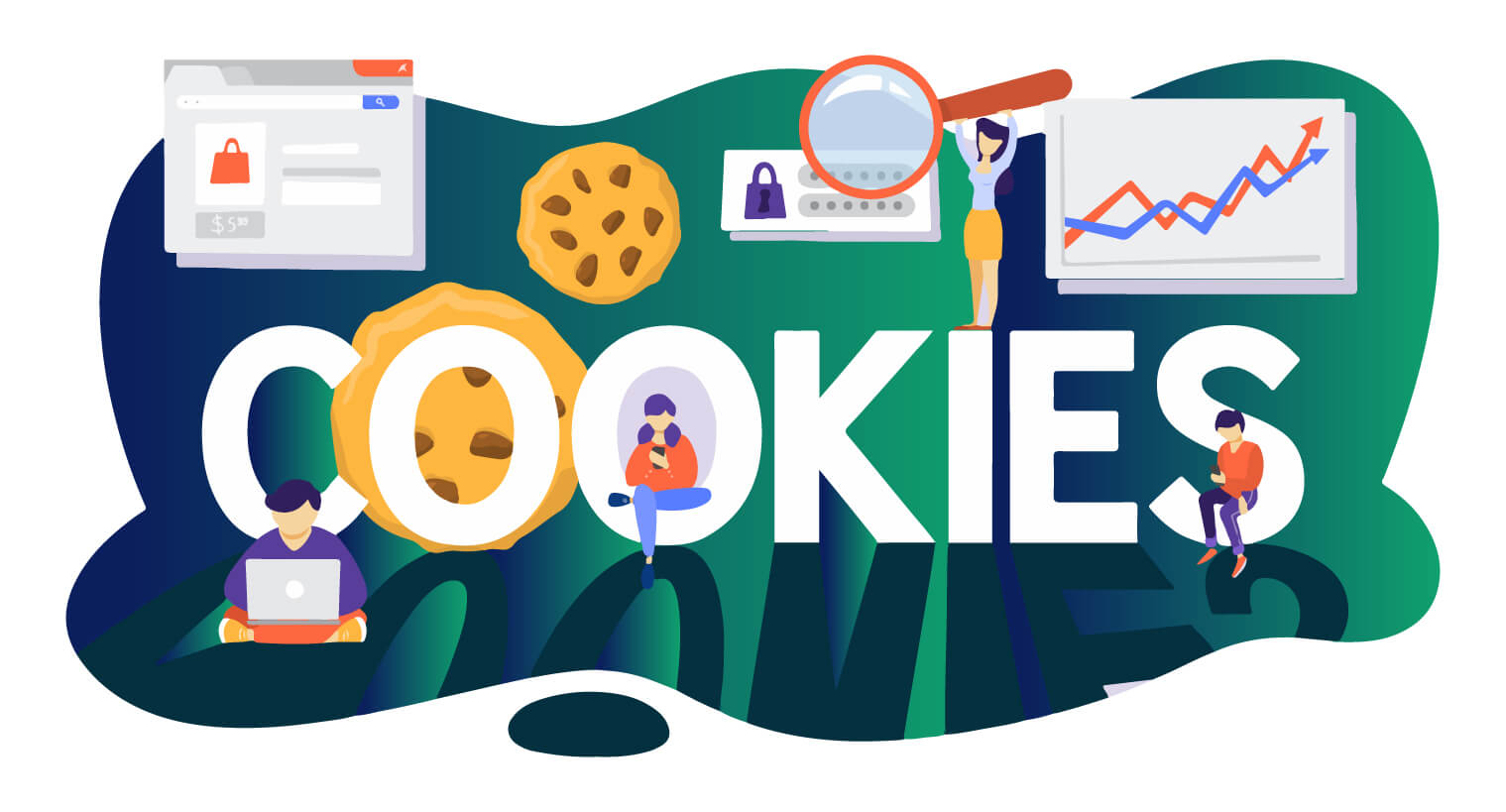
It’s been since the mid-1990s that advertisers are relying on third-party cookies to target audiences by establishing and tracking their behavior across a range of activities on the internet. Studies state that it’s really tough for brands to get over third-party cookies and rely on a new method to target the audience.
This traditional method has raised serious concerns worldwide because users’ private data is being compromised at the expense of advertisers trying to convert their audience into customers. Moreover, targeting people using this technique is quite old and needs to be phased out to bring something newer and better into the market.
There have already been recent developments and decisions taken to remove the third-party cookies by the end of 2023 after the regulations by GDPR have been introduced. Decisions to phase out the third-party cookies have already been taken by the world’s most famous browser, Google Chrome, as declared that it would get rid of third-party cookies by the end of 2023.
Third-party cookies have already been removed by Safari, and Firefox automatically disables them when used for tracking. iOS 14 and macOS are introducing new privacy and tracking options for users. There is yet no acceptable substitute with the potential to disrupt the whole digital advertising market and threaten publisher income streams.
Also Read: Contextual Intelligence: Everything You Need to Know and Why It Matters?
Challenges Faced without Third-Party Cookies
Cookies are files that a website sends to the browser when a person visits it. Here, the goal is to save crucial information and help you improve your browsing experience. These are common on most websites and are a common way to navigate the internet nowadays.
For years, the $565 billion global ad industry has relied on identifying audiences’ behavior online by tracking their behavior. This has helped them a lot in crafting offers and promotional messages that are both timely, and relevant to consumers.
By remembering login credentials, site preferences, and other information, first-party cookies save users time and effort when they browse. They typically require site visitors to register their consent to use them, along with their personal information, and generally get a thumbs up from consumers, as a result.
Third-party cookies are another matter. There are some cookies that do not require the user’s permission, like the ones that provide technical information on site settings, navigation, and display. Others measure user behavior, compile surfing information, and let digital marketers target and re-target ads to customers.
How Media Agencies can Help Brands Quit Cookies?
The responsibility for preparing brands and advertisers for the shift from third-party cookies is mostly on the media agencies. This is because they have the most access to knowledge and are in constant contact with representatives of global players such as Google or Facebook.
Thus, in order for these agencies to provide the best possible service to their clients, it is important to accurately measure their level of experience. This will help in ensuring there are no gaps in their knowledge that could lead to confusion when it comes to cookie-less advertising.
Brands that invest in digital advertising generally have a good level of understanding of the mechanics of online campaigns and how cookies are used to identify and reach specific audiences.
However, these are some of the ways in which agencies can help their clients in sailing in the cookie-less world. Agencies provide guidance through the rapid changes that occur in the digital advertising ecosystem with minimal impact.
- Firstly, it is crucial to ensure that you have a diverse internet presence, including discreet, non-intrusive activities.
- Continued education and information sharing are also critical for digital advertising’s effectiveness in a cookie-less future.
- Regular seminars and conferences where experts discuss the implications of forthcoming developments and exchange best practices.
- Instead of functioning in silos, these conferences are intended to disseminate knowledge about cookie-less advertising and advance the industry as a whole.
Final Word
The death of third-party cookies was inevitable because one day or another other people would have raised the importance of privacy as they are doing now. So, instead of viewing the removal of third-party cookies as a danger, we might see it as an opportunity to broaden our perspective on the digital world and pay greater attention to customer experiences, data quality, privacy protection, and online brand safety.
This is the reason why more and more people are turning their back on third-party cookies and moving towards contextual targeting as they fulfill all the demands of brands without hindering users’ privacy.
Death of Third-party Cookies: The First-Party Media Monetization Checklist
PUBLISH DATE: 20 July 2022
With the world on the web prioritizing privacy and security, major online browser vendors such as Mozilla Firefox and Apple were forced to phase out third-party cookies. Furthermore, Google Chrome is on a similar path to prohibiting third-party cookies by the end of 2023.
This has heightened the value of first-party data. In a first-party environment where media owners’ assets have become critical, relying on rapid repairs is no longer an option. An action in one area will have ramifications across several aspects of the organization. Therefore, this requires an audience and monetization checklist.
Also Read: Cookieless Future is Near, Adtech Looks Forward with AI
The Audience and Monetization Checklist
What are the separate components of a good media strategy, and how do they connect? Below are a few components of the audience and monetization checklist to follow:
- Recognize your audience. Who are your users/clients? What do they desire? What do they require? Examine the external influences that affect them so that opportunities and problems may be identified sooner.
- Concentrate on the product (media, not the ad slot). Audiences aren’t people who surf the web looking for advertising to click on. The offering (news, movies, games, etc.) attracts and maintains them, resulting in the high-quality engagement that marketers need.
- Create an exceptional user experience. It supplements a solid product, aids data strategy, and fosters confidence and trustworthiness.
- Use a “trust funnel” as the core of a data strategy (no consent, no party). Use it as a stepping stone to developing more advanced techniques (e.g., registration, subscription, and zero-party data strategies). It also helps to mitigate the effects of ad blockers.
- Increase the value of first-party assets by keeping them packaged for a more compelling offering to marketers. A full bundle has value: a genuine audience, premium context, data, authentication, and compelling forms. Selling (and purchasing) the environment as a whole is also critical for brand safety.








